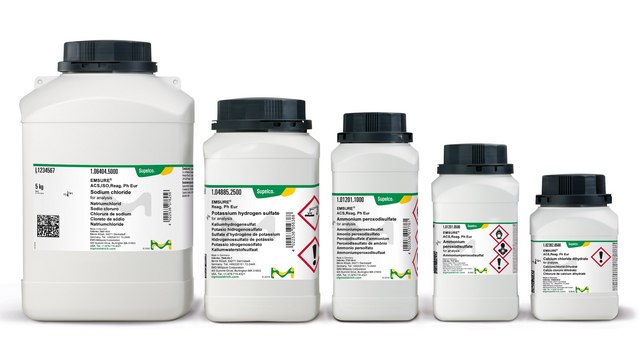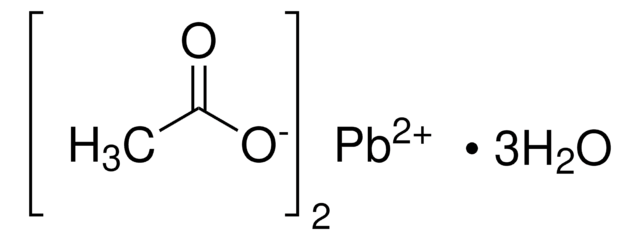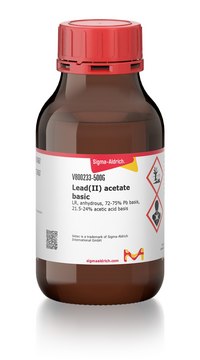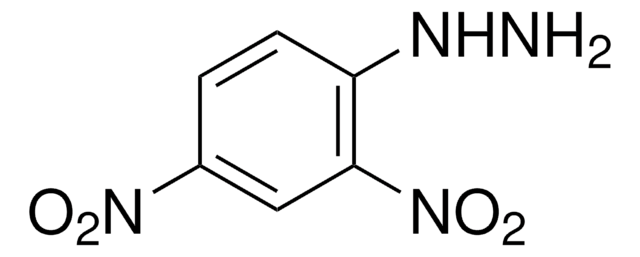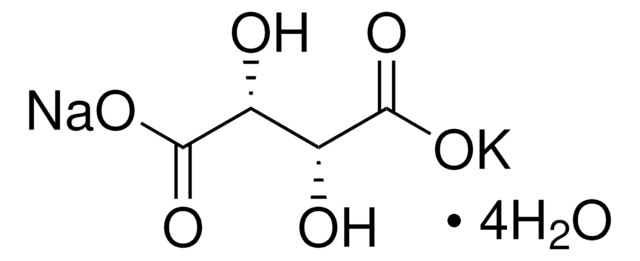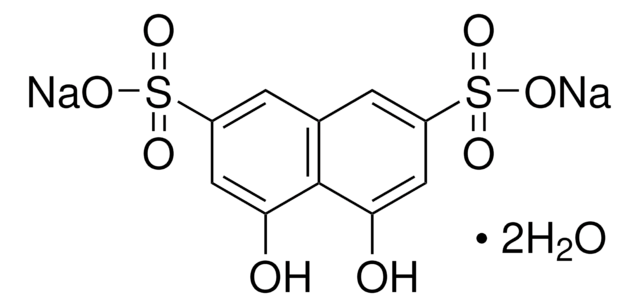32306
Lead(II) acetate basic
anhydrous, for sugar analysis according to Horne, ≥33.0% basic Pb (as PbO) basis, ≥75.0% total Pb (as PbO) basis
About This Item
Recommended Products
grade
for sugar analysis according to Horne
Quality Level
form
powder
analyte chemical class(es)
sugars
reaction suitability
reagent type: catalyst
core: lead
concentration
≥33.0% (basic Pb (as PbO))
≥75.0% (total Pb (as PbO))
technique(s)
photometry: suitable
impurities
≤0.02% insoluble in acetic acid
≤1.0% insoluble in water
loss
≤1.0% loss on drying, 105 °C, 2 h
anion traces
chloride (Cl-): ≤30 mg/kg
nitrate (NO3-): ≤30 mg/kg
cation traces
Ca: ≤50 mg/kg
Cd: ≤10 mg/kg
Co: ≤10 mg/kg
Cu: ≤20 mg/kg
Fe: ≤20 mg/kg
K: ≤100 mg/kg
Mg: ≤50 mg/kg
Na: ≤100 mg/kg
Ni: ≤10 mg/kg
Zn: ≤10 mg/kg
application(s)
food and beverages
general analytical
SMILES string
O[PbH2]O.CC(=O)O[PbH2]OC(C)=O
InChI
1S/2C2H4O2.2H2O.2Pb/c2*1-2(3)4;;;;/h2*1H3,(H,3,4);2*1H2;;/q;;;;2*+2/p-4
InChI key
ODPICMBMWOLHAJ-UHFFFAOYSA-J
Looking for similar products? Visit Product Comparison Guide
General description
Other Notes
107414
Signal Word
Danger
Hazard Statements
Precautionary Statements
Hazard Classifications
Acute Tox. 4 Inhalation - Acute Tox. 4 Oral - Aquatic Acute 1 - Aquatic Chronic 1 - Carc. 2 - Eye Dam. 1 - Lact. - Repr. 1A - STOT RE 1
Target Organs
Central nervous system,Blood,Immune system,Kidney,Reproductive organs
Storage Class Code
6.1C - Combustible acute toxic Cat.3 / toxic compounds or compounds which causing chronic effects
WGK
WGK 3
Flash Point(F)
Not applicable
Flash Point(C)
Not applicable
Personal Protective Equipment
Regulatory Information
Choose from one of the most recent versions:
Already Own This Product?
Find documentation for the products that you have recently purchased in the Document Library.
Our team of scientists has experience in all areas of research including Life Science, Material Science, Chemical Synthesis, Chromatography, Analytical and many others.
Contact Technical Service